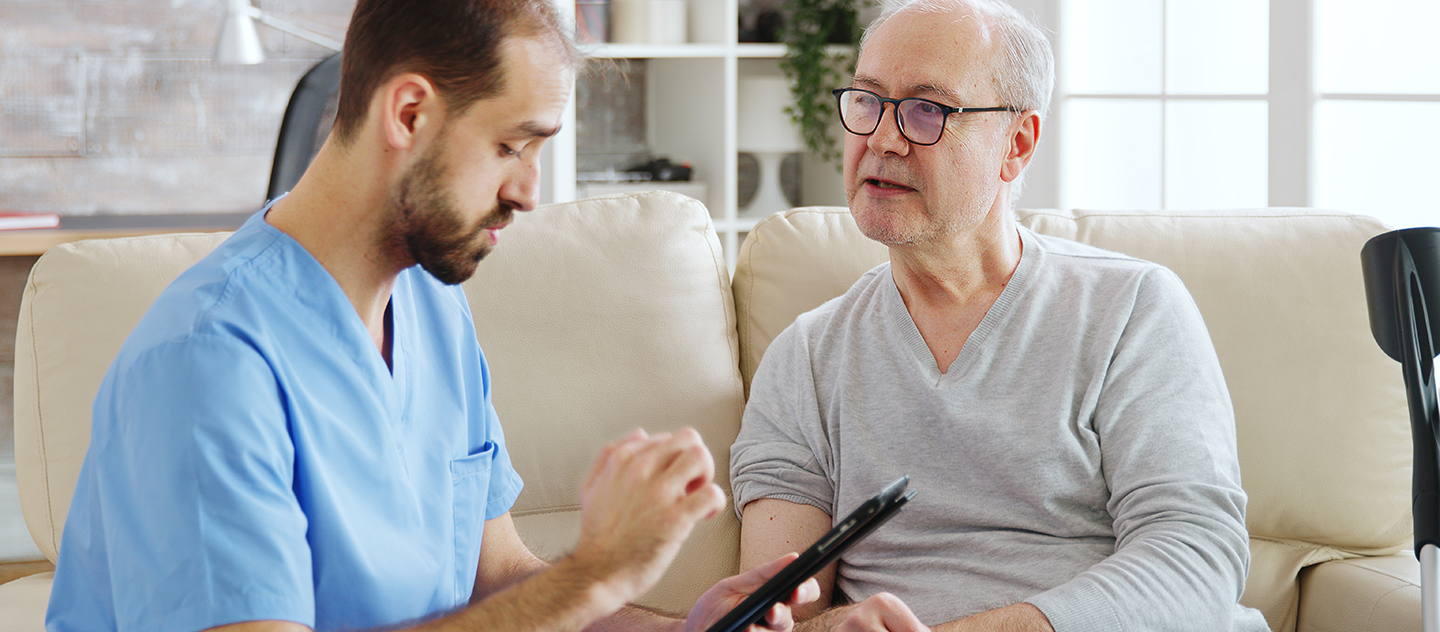Remote Patient Monitoring for Chronic Conditions
The benefits of telehealth extend to many patient populations and can be used to treat a variety of ailments from cancer to mental health. When health system executives consider Remote Patient Monitoring, they might think of the more common conditions, such as diabetes or hypertension where entering glucose numbers or blood pressure readings is incredibly simple.
Yet consider how impactful telehealth services are for treating mental health and the power it has to reduce suicide and care for the whole person. May is mental health awareness month making it a perfect time to pause and consider how digital tools can help in offering flexible chronic care management services.
Learn more about telehealth benefits for treating mental health, hypertension, chronic kidney disease (CKD) and coronary artery disease (CAD), asthma and COPD, cancer, and HIV.
Benefits of Telehealth for Mental Health
The COVID-19 pandemic created a sense of urgency for finding ways to treat mental health remotely. But even as the pandemic began to ease, patients demonstrated a desire for continuing remote patient care.
Some populations, such as those living in rural areas or those with a lower income level find it challenging to get to in-person mental health appointments and pay for them. Remote Patient Monitoring is making it possible for these patients to still get the care they need at a distance.
For mental health, telehealth allows for:
- Online video sessions
- Chat therapy and quick questions for a provider when it is convenient for the patient
- Monitoring objective device data
- Increased engagement using a variety of tools
- Data insights
Additionally, telehealth can help those needing mental health counseling obtain it more discreetly without the need to tell friends and family about it.
Remote Patient Monitoring for mental health is advantageous because it also allows patients to record subjective data, such as how they are feeling and their overall cognitive functions. They can update those symptoms throughout the day to demonstrate how different situations or stimulants impact their mental health.
Using a smartphone and a patient app or portal, they can log in wherever and whenever it is most convenient for them. Likewise, their provider can review the information throughout their day.
Recognizing that telehealth offers immense potential for improving behavioral health care, the U.S. Department of Health and Human Services offers a best practices guide to aid providers in setting up these services and preparing their patients for what to expect.
Remote Patient Monitoring for a Variety of Patient Conditions
Telehealth is proven to be an excellent resource for improving a patient’s self-management and care plan adherence. It puts the patient in control of their care and offers them more lines of communication to reach their providers.
So it’s no big surprise that Remote Patient Monitoring is helping patients control their health care expenses and manage their chronic conditions in a timeframe that’s right for them.
Here’s a look at some additional chronic conditions that RPM can help patients and their providers manage with ease.
- Hypertension: Nearly half of all U.S. adults live with hypertension, which amounts to approximately $91.4 million. And without proper care, hypertension can lead to heart disease or stroke. Remote blood pressure monitoring can help providers spot trends and notify the patient of concerning symptoms before it’s too late.
- Chronic kidney disease: In 2018, Medicare costs for chronic kidney disease were $81.8 billion. With 15% of the U.S. adult population suffering from the disease, finding new ways to care for these patients is crucial. A new study found that RPM can decrease hospital visits and readmissions for seniors living with chronic kidney disease.
- Asthma and COPD: COPD accounts for $49 billion in healthcare spending each year. Approximately 15.7 million Americans live with COPD. Remote Patient Monitoring is excellent for helping manage the condition because a pulse oximeter aids in measuring oxygen saturation and can alert providers when a patient needs attention. Likewise, asthma is well-controlled at a distance with patients inputting data about their health using smart devices.
- Cancer: Receiving care from the leading physicians to treat various types of cancer used to mean hours of travel, hotel stays or hospital admissions. And for families supporting the patient, it meant days off work. Virtual care for cancer has changed that and allowed patients to see the best doctors based on their needs and the type of cancer they are receiving treatment for. Physicians are appreciating the flexibility telehealth offers saying they believe it helps them manage the patient’s care even better while reviewing lab results quickly.
- HIV: Treating HIV requires close adherence to medication regimens. But patients need support throughout the process. Telemonitoring offers that support at a distance in a convenient way that makes the chronic illness easier to manage.
Remote Patient Monitoring offers new ways to care for patients living with a variety of conditions. You can read more on the AMC Health RPM page where you’ll find statistics for how RPM treats:
- Heart failure
- Diabetes
- Emergency department and hospital readmission reduction
- At-risk maternity/NICU
- Medication reconciliation and optimization
Explore the Remote Patient Monitoring solutions AMC Health offers to learn more about how you can improve patient satisfaction and care for a variety of chronic conditions.







.jpeg?width=2000&name=AdobeStock_450901146%20(1).jpeg)






